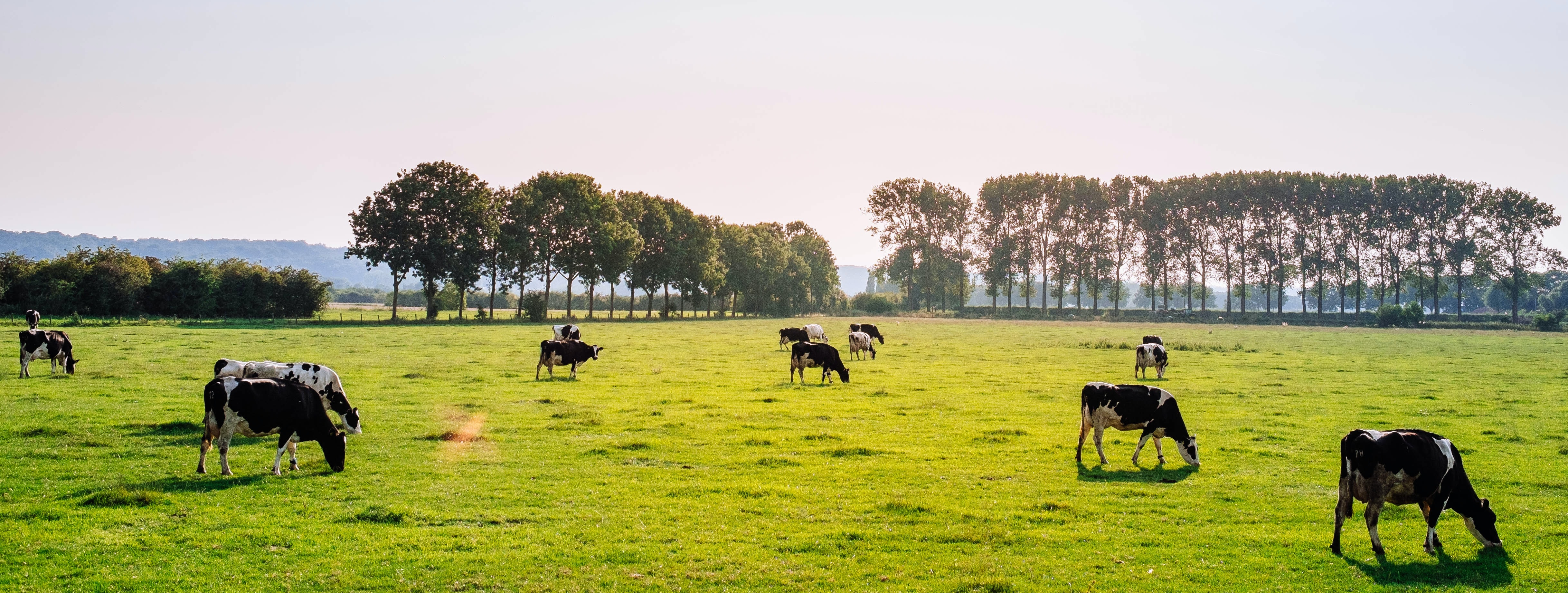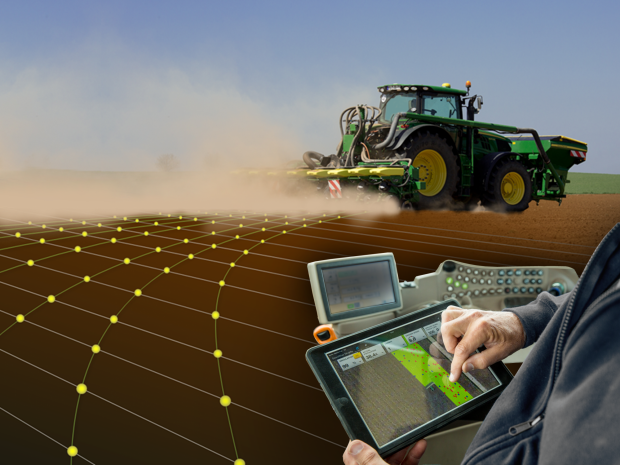Autonomous Mobile Machines in Digital Agriculture – The Next Level
Arable Livestock North-West Europe Autonomous Mobile Machines in Digital Agriculture – The Next Level
Autonomous Mobile Machines in Digital Agriculture – The Next Level
Increasing yields will be a key challenge for future Agriculture to feed the growing global population and for higher welfare. As a second challenge, agriculture has to contribute to mitigating Climate Change and to achieving overall Sustainability.
For this reason, the European association of agricultural machinery and equipment producers (CEMA) in 2011 defined the guiding principle for agricultural engineering as “Producing More with Less”, to address the needs for increasing output from farms as well as the demand for lowering inputs of fertilizers, plant protection chemicals, and fossil resources.
Actually, agricultural engineering had already been following this principle since the late 1990s when the idea of Precision Agriculture (PA) was born. One of the key visions of PA is to treat each animal and every single plant as an individual. Plant and animal nutrition, water supply and other support (e.g. plant protection measures to plants) shall only be given to each individual exactly to the amount needed for optimal development. The “over-dosing” with negative environmental and economic consequences shall be avoided and maximum yields will be achieved.
As a third grand challenge besides generating higher yields and minimizing environmental impact, agriculture has to deal with the ongoing structural transformation process of urbanization. This structural change is or will globally lead to scarcity of workforce in rural areas. Thus, CEMA’s guideline “Producing More with Less” can also be understood as the demand for producing more with less workforce. A high level of automation and autonomous machines will be fundamental for future agriculture.
The challenges
1. How to increase the yield?
2. How to achieve sustainability and mitigate climate change?
3. How to master urbanization and structural transformation?
Today, PA in livestock farming is highly developed, and already belongs to the economic sectors with the most intensive use of robots and autonomous machinery. Robots can increase animal welfare significantly, for example when cows can decide about milking but not time of day. Animal diseases can be foreseen and antibiotic use can be restricted to a minimum and reasonable amount. Moreover, autonomous milking, feeding and other systems are improving ergonomic and other work conditions of staff in or around stables.
The Benefits of using Robots for Livestock Farming:
1. Increase animal welfare.
2. Foresee animal diseases and restrict the use of antibiotics to a minimum.
3. Improve work conditions of staff.
In arable farming, the development of technology and applications towards robotics is slower because the outdoor production environment is more complex compared to indoor conditions. Nevertheless, the last 15 years of PA have seen the introduction of automatic steering and control systems for on-field automation of mobile machines (such as tractors or combines). The basic technology approach is to guide the machines along pre-defined field paths. The key sensor technology for this is highly precise satellite navigation principally comparable with and based on standard positioning services such as GPS, GLONASS, Beidou, Galileo but with positioning enhancement by terrestrial position correction: through RTK DGPS, absolute positioning of agricultural machines can be done with accuracy down to +/- 2,5 cm at the typical work speeds of agricultural machines (generally below 20 km/h). With additional control systems, not only path guided steering can be performed but also difficult situations can be managed. Examples are integrated tractor and implement management (TIM), headland manoeuvres or even machine to machine steering and drive control for harvesting machines (combine, forage harvesters) cooperating with tractor-trailer-combinations.
TIM even was standardized as a part of the so-called ISOBUS (ISO 11783).

So, today’s agricultural automation systems allow the driver to get rid of the wearisome task of steering or driving on the field. The machine operator can concentrate on other tasks such as management and control of the production process. In automotive terms, we would call this Autonomy Level 3 (SAE J3016). As an example, the picture attached shows the John Deere Exact Emerge system for seeding of sugar beet or corn with a relative accuracy of even +/- 1 cm.
Today already, a tractor without a driver can be technologically realized. But as a paradigm, autonomous mobile machines are perceived as a hazard to the operational environment and consequently, legal constraints prevent driverless tractors even on the field so long as they are freely accessible. This paradigm will likely change forced by upcoming autonomously driven cars. Thus, following the mobility sector, autonomous mobile machinery will become accepted and a reality.
From today’s perspective, there might be a quicker pathway to autonomous machines on fields: Shortly, after the idea of Precision Agriculture was born, a second new approach for the creation of higher precision and sustainability in agriculture came up. Small robots (in the range of up to 200 kg) could replace the large and powerful machines with several hundred horsepowers. Such small robots could perform specific tasks such as seeding, weeding, taking soil samples, looking for plant diseases, etc. Due to their small size and weight, they could be inherently safe and so could legally be operational on-field already today. Furthermore, small field robots could operate autonomously 24 h a day and at high precision. Additionally, they would not have soil compaction issues. Upscaling of on-field performance would take place not through higher machine power but through the application of a higher number of machines for the specific application forming machine swarms. Several small field robots have already been presented and seem to be close to market launch.
The Opportunities of using (more) (Autonomous) Robots in Arable Farming
1. More precise positioning and more economic use of equipment, seed, and plant treatment.
2. Better work conditions of human staff and reduction of repeating=boring tasks.
3. Higher flexibility due to numbering up instead of scaling up.
While small field robots might become an interesting solution for performing specific tasks, they will not be applicable for all agricultural tasks, e.g. they seem not to be applicable for soil tillage or for on-field transport since here high traction forces are mandatory requiring high weight of machines. These and many other questions of field robotics are being discussed today and will be in future. It will be thrilling to see what robot type will make the race on the field – small or big ones or machine sizes in between or a combination of all of these types? The project “Feldschwarm” (funded by the German Ministry for Economics and Energy) is currently developing and testing different concepts for field swarms principally covering the whole range of applications in arable agriculture.
Not only the machines will change from man guided systems to mobile machines with a higher degree of automation and even autonomy. Also, the way machine fleets will be controlled, and information will be handled is rapidly changing. In the future, field robots of any size will operate in an interconnected manner. Farm management systems (FMS) in the cloud will guide fleets of machines. FMS will collect information from many sources such as satellite-based earth observation, drone-based observation or sensing systems, weather forecasts, agricultural and economic consultancy services and many more. FMS will deduct and provide decision support for the optimal process and farm management and one day even might make own decisions about machine control, machine interaction and process control. This could be seen as a higher level of today’s TIM (tractor implement management) where not just one tractor and its implement are being controlled in a closed-loop, but multiple tractors, robots and other machines. This can be called “vertical integration of process control”. There will also be connections and data management between different processes on a farm as well as along the whole food production chain, what might be called horizontal integration of food processing, delivering a traceable and trustworthy food production which covers the interests of all stakeholders on highest food standards, sustainability, food security, and economy.
VDI will keep working on this and other initiatives.



